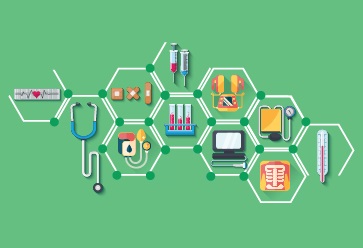The Medical Device Coordination Group (MDCG), the advisory body that consults the European Commission on the implementation of laws surrounding medical device circulation, issued guidance related to a new codification system to be used under the framework established by the Regulation 2017/745 (MDR).

The Scope Of New Guidance
This MDCG guidance is dedicated to the codes assigned by designating authorities to notified bodies. Specifically, these codes contain information regarding the scope of designation and can be used to provide information concerning the professional qualification of individual experts in each notified body. They can also be used to indicate the qualification necessary to access the particular medical device.
Thus, the codes could be assigned by:
- The designating authority to the notified body,
- The notified body to the medical device,
- The notified body to its employees (experts).
These codes could be applied to each step of the marketing application process. First, the medical device manufacturer should use codes to choose which particular notified body to submit the application to, depending on the type of device subject to review. Then, the notified body uses these codes to form a team of experts responsible for the assessment procedure depending on the qualifications necessary for the type of device. A designating authority could also use these codes to check whether the notified body fits the requirements and the qualified staff necessary to cover the scope of designation.
The lists of codes are contained in the Implementing Regulation 2017/2185, which will simplify their application in different scenarios. The guidance issued by the MDCG is intended to provide additional details and highlight the most important aspects associated with the utilization of these codes. The manufacturer Ab Initio assigns the code itself, but in some cases, the code can be assigned by the notified body. If the code has been already assigned by the manufacturer, the notified body should check it to ensure that it falls within the scope of its designation.

Types Of Medical Device Codes
Each time one submits an application, the manufacturer has to indicate the particular type of the device. The notified body must check whether the codes assigned to the device are correct and reassign codes if necessary. In the case of any discrepancies, the code assigned by the notified body shall take the incorrect codes place.
There are three main types of codes that can be assigned to a device:
- MDA/MDN codes are based on the intended purpose and design of the device. This codification system includes internal hierarchy providing that higher codes should be applied since only one MDA/MDN code can be assigned to the particular device.
- MDS codes indicate the specific features of devices. These codes should be assigned when MDA/MDN codes have already been assigned. Each device can bear several MDS codes (under the general rule – all applicable codes) or could have no such codes assigned at all.
- MDT codes indicate the technological processes utilized during the manufacturing of the device. Each device should have at least one MDT code assigned after MDA/MDN codes are assigned.
MDA/MDN codes are mostly used to define particular experts and specialists that should be engaged in the application review process. This provides the possibility to identify skills necessary to evaluate the device depending on its features. In certain cases the notified body could also engage additional specialists if the assessment team lacks the proper qualifications. In other words, the notified body utilizes MDA/MDN codes to check whether the personnel participating in the review process have the appropriate qualifications. Depending on the particular situation, MDA/MDN codes could be based either on the sphere of the device in general or on the particular principle utilized in the device. Thus, there could be certain situations when several codes are applicable – for example, if the device could be used in several different areas. The hierarchical order is based on the specific knowledge needed. If the device contains several components and each has its own code, the general rule provides that the main intended purpose and the area of application of the whole device will determine the code. Similarly, the notified body also verifies that the experts engaged in the review process have the qualifications necessary to evaluate each component in this case. There are also codes assigned to software that is not a part of any medical device since it requires a high level of professional skills.
MDS, or device specialization codes, are used to verify that the assessment team has the qualifications necessary to evaluate all specific features of the device. In most cases, the codes that are used deal with technical documentation review. It is important to mention that most of the MDS codes have corresponding MDT codes that describe technical knowledge. MDS codes could also be used to verify certain manufacturing processes.
MDT, or technology codes, are used to verify the qualification of auditors performing the assessment of technological processes on various steps of medical device production. That is why the assignment of MDT codes should be based not only on the intended purpose of the device, but also on the specifics of the manufacturing process. For example, the process of manufacturing the device from several components would be described by one code while the labeling process would be described with another one. Thus, the device could be assigned with numerous MDT codes – one code per step of the manufacturing process respectively. It is also important to mention that MDT codes would be assigned even for the processes that are not directly controlled by the manufacturer itself – e.g., the process of transforming raw materials into components that would be used to produce the device in the future.
Conditions And Clarifications
In some cases, it may not be enough to use the codes to describe all the features of the device. Under these circumstances, the notified body should use additional “conditions” to provide additional descriptions and add more details to the scope of qualifications needed to perform the assessment. The designating authority could also use conditions if it is necessary to tighten the scope of the devices inside the particular code group. In other words, conditions should address the particular characteristics of the device. For example, conditions could be used to provide exclusions from the scope of the devices under the code – e.g. MDN 1102, excluding Class III medical devices. In this case, the category covers non-active osteo- and orthopedic implants except those defined as Class III under the risk-based classification system. It is important to mention that all conditions should be formulated clearly enough to avoid misunderstandings due to the wording. For instance, it is advised to add words “excluding” or “including only”. Conditions can be used to exclude certain devices if the notified body does not employ the personnel having qualifications necessary to perform the assessment for specific medical device groups.

How Can RegDesk Help?
RegDesk is a next-generation web-based software for medical device and IVD companies. Our cutting-edge platform uses machine learning to provide regulatory intelligence, application preparation, submission and approvals management globally. Our clients also have access to our network of over 4000 compliance experts worldwide to obtain verification on critical questions. Applications that normally take 6 months to prepare can now be prepared within 6 days using RegDesk Dash(TM). Global expansion has never been this simple.
Sources:
https://www.raps.org/news-and-articles/news-articles/2019/12/mdcg-offers-new-guidance-on-mdr-ivdr-sampling-cohttps://ec.europa.eu/transparency/regexpert/index.cfm?do=groupDetail.groupDetail&groupID=3565https://ec.europa.eu/docsroom/documents/38669?locale=enhttps://ec.europa.eu/docsroom/documents/38670?locale=en

